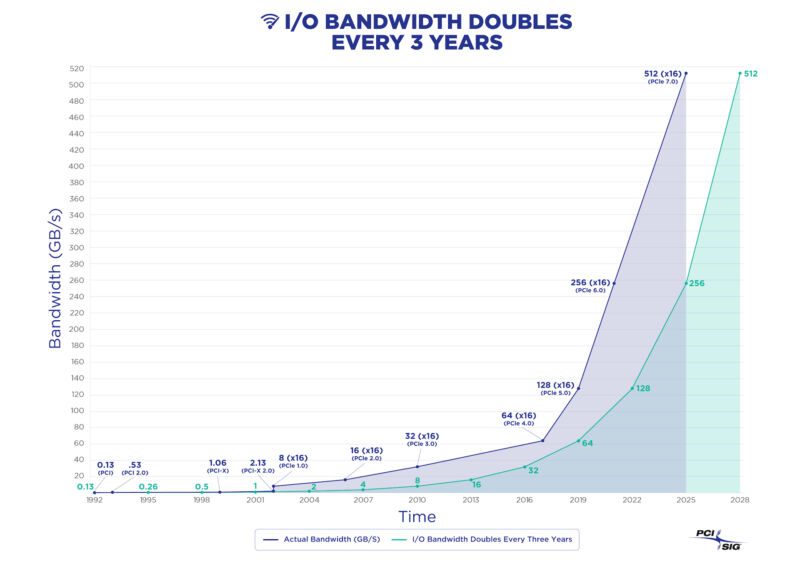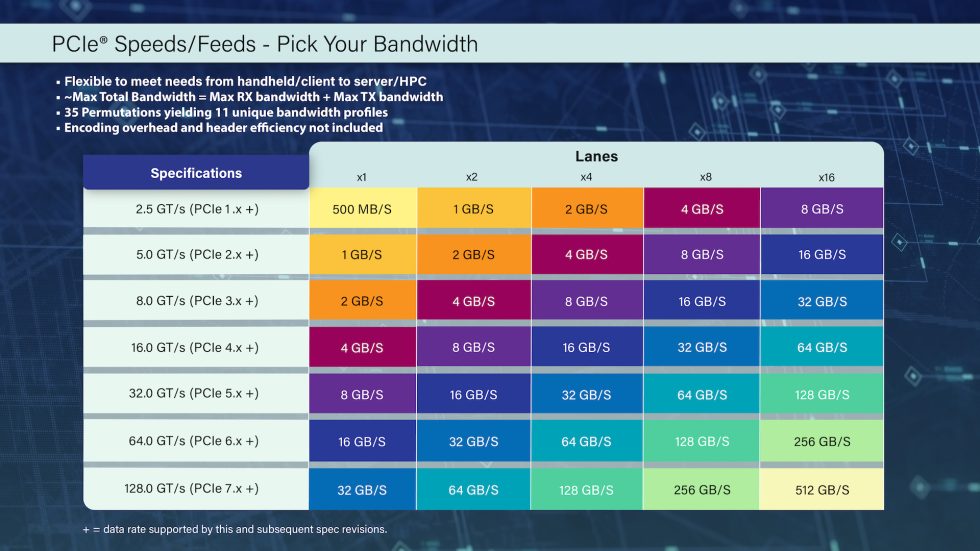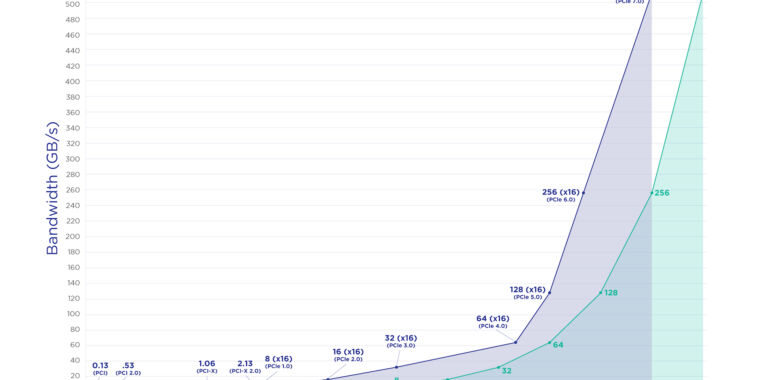
PCI-SIG
The group responsible for developing and updating the PCI Express standard, the PCI-SIG, aims to update that standard roughly every three years. Version 6.0 was released earlier this year, and the group has announced that PCIe version 7.0 is currently on track to be finalized sometime in 2025. Like all new PCI Express versions, its goal is to double the available bandwidth of its predecessor, which in PCIe 7.0’s case means that a single PCIe 7.0 lane will be able to transmit at speeds of up to 32GB per second.
That’s a doubling of the 16GB per second promised by PCIe 6.0, but it’s even more striking when compared to PCIe 4.0, the version of the standard used in high-end GPUs and SSDs today. A single PCIe 4.0 lane provides bandwidth of about 4GB per second, and you need eight of those lanes to offer the same speeds as a single PCIe 7.0 lane.

PCI-SIG
Increasing speeds opens the door to ever-faster GPUs and storage devices, but bandwidth gains this large would also make it possible to do the same amount of work with fewer PCIe lanes. Today’s SSDs normally use four lanes of PCIe bandwidth, and GPUs normally use 16 lanes. You could use the same number of lanes to support more SSDs and GPUs while still providing big increases in bandwidth compared to today’s accessories, something that could be especially useful in servers.
As with all prior versions of the PCIe standard, the PCI-SIG says that PCIe 7.0 devices will remain fully backward compatible with older PCIe versions. There’s some encoding overhead that will keep real-world accessories from reaching the full 32GB-per-second speeds promised by PCIe 7.0, but that’s true of all PCIe versions.
It will be a year or two before we begin to see PCI Express 6.0 in consumer PCs, to say nothing of version 7.0. Intel’s latest 12th-generation Alder Lake processors include a limited number of PCIe 5.0 lanes, and PCIe 5.0 will also be part of AMD’s Ryzen 7000 series later this year. But consumer GPUs and SSDs that use PCIe 5.0 still don’t really exist yet. Most new standards take years to go from “draft” to “finalized” to “available in shipping products” to “ubiquitous,” and new PCI Express versions are no exception.








